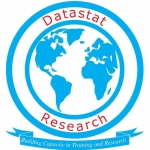|
|
Training Course on Introduction to Geodatabase Techniques
USD 1,000 |
Venue: Nairobi and Mombasa, Kenya
This course is aimed at users who need to understand more about the management and behavior of a geodatabase. This will include creating, importing and manipulating vector and, raster data. It will also cover creating attribute and spatial validation rules (behavior) and working with geodatabase annotation.
Overview master the essential concepts and skills needed to efficiently create a geodatabase, add data to it, and realistically model the real-world spatial relationships inherent to your data. You will learn about unique geodatabase features that help ensure data integrity over time and why the geodatabase is the preferred format for storing and managing geographic data. Course concepts apply to file-based and multiuser geodatabase.
Who Should Attend?
GIS data managers, analysts, specialists, data technicians, database administrators, and others who manage and maintain data stored in a geodatabase. GIS managers who need to understand the capabilities of the geodatabase should also attend.
Duration
5 days
Course objectives
- Design and manage databases
- Understand different types of databases and their applications
- Normalize databases
- Create and execute queries
Course Content
Module 1
- Introduction to the Geodatabase: Geodatabase types; compressing geodatabase; upgrading geodatabase
- Relational Database Concepts and Theory
- Database Design concept, Implementing a database design, adding, updating and deleting records in a database
Module 2
- Getting started with PostGIS
- Building PostgreSQL/PostGIS and MS access databases
- Query writing (spatial select queries)
- PostGIS Geometry types
- Working with views
- Spatial relationship and measurements functions
- Types of databases (operational databases, end-user databases, distributed databases, analytical databases, relational databases, hierarchical databases and database models
Module 3
- Database models
- Database Management Systems (database management systems include PostgreSQL, MySQL, Microsoft SQL Server, Oracle, IBM DB2 and SAP.)
- Distributed databases (Homogeneous Distributed Databases Management System)
Module 4
- Entity Relation diagrams and normalization
- Design and populate a geodatabase: Design principles; creating schemas; spatial reference
- Create data / export data: Geodatabase elements; Create feature classes and feature datasets; assign spatial reference, import & export data, Load data
- Data adjustment: Georeferencing; Spatial adjustment
Module 5
- Spatial behavior: Geodatabase topology; Edit using geodatabase topology; Map topology(spatiaLite)
- Geometric Networks: Create a network; Utility network analysis
- Labels & annotation: Create labels; Convert labels to annotation; Edit annotation
- ArcGIS Online (optional) or leaflets/open layers: Create an online map; Open online map in Desktop; Publish a desktop map to the web
Methodology
The instructor led trainings are delivered using a blended learning approach and comprises of presentations, guided sessions of practical exercise, web-based tutorials and group work. Our facilitators are seasoned industry experts with years of experience, working as professional and trainers in these fields.
| Nairobi and Mombasa, Kenya | Aug 19 - 23 Aug, 2024 |
| USD 1,000.00 | |
Sammy Gathuru 0724527104
Related Courses
 Training Course on M&E, Data Management and Analysis for in Food Security and Nutrition Programmes
Training Course on M&E, Data Management and Analysis for in Food Security and Nutrition Programmes
5 days, 06 - 10 Jan, 2025
Datastat Research Center
 Training Course on Grant Management using Infor Sun Accounting System
Training Course on Grant Management using Infor Sun Accounting System
12 days, 06 - 17 Jan, 2025
Datastat Research Center
 Training Course on Monitoring and Evaluation for Governance (Decentralization and Local Governance)
Training Course on Monitoring and Evaluation for Governance (Decentralization and Local Governance)
5 days, 06 - 10 Jan, 2025
Datastat Research Center




